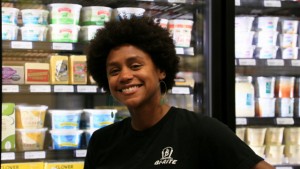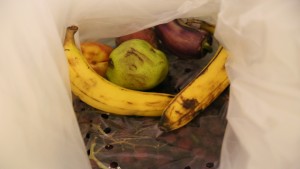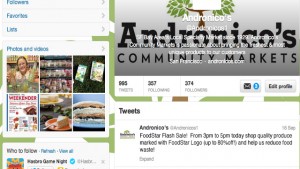On a gray, foggy summer morning in San Francisco, Shakirah Simley is busily typing away at a computer in a loft space overlooking premium organic produce, prepared foods and artisanal groceries for sale at Bi-Rite Market.
The 28-year-old former Fulbright scholar, cooking instructor and Community Coordinator for Bi-Rite is on a mission this morning: to give away 115 pounds of organic gold apricots and black seedless grapes to a local hunger-relief charity. Fifteen minutes later, a tweet alerts Simley that a volunteer from Food Runners is on his way to claim the fresh fruits which will be distributed within 24 hours to low-income residents in San Francisco.

It's a stunningly effective demonstration of how the battle against food waste has shifted online, where Facebook, Twitter and startups are helping to nimbly crowdsource surplus food that would otherwise end up composted or worse - end up rotting in a landfill.
Thanks to efficient purchasing and its popular deli and creamery, not much gets wasted at Bi-Rite. Still, the summer months can yield bumper crops of fruits and vegetables. So in June of 2013, Simley decided to give away some excess fruit through CropMobster, a web site co-founded and launched by Nick Papadopoulos, a Bi-Rite supplier and the General Manager of Bloomfield Farms.
"We need to change the mindset that it’s acceptable for 40 percent of any industry to go to waste. Imagine if you saw 40 percent of smartphones going to the dump just as they're coming off the assembly line," said Papadopoulos, a management consultant who created CropMobster after seeing that a significant portion of each week's harvest wasn't being sold. Determined not to let the crops go to waste, he jumped onto Facebook and sent out texts to see if his network of friends and contacts would come to the rescue.

